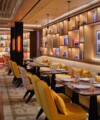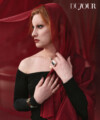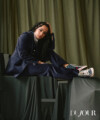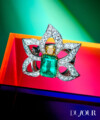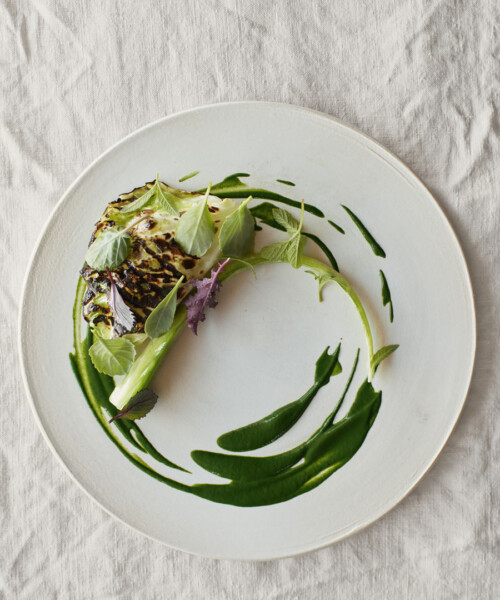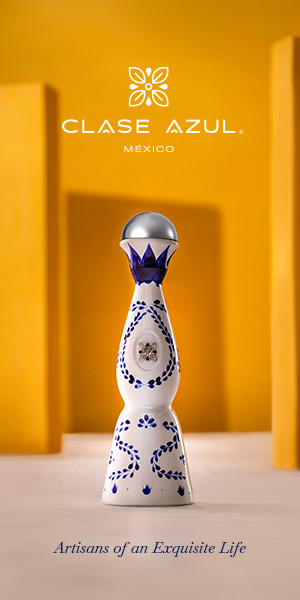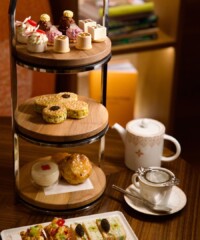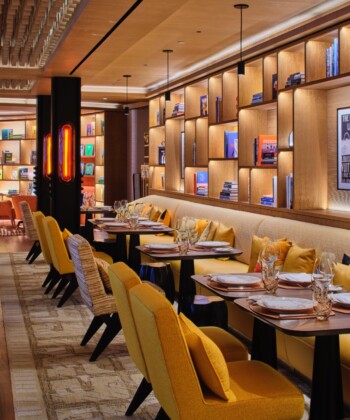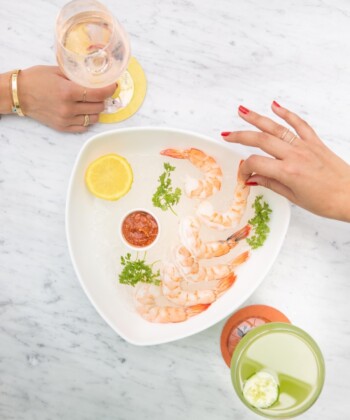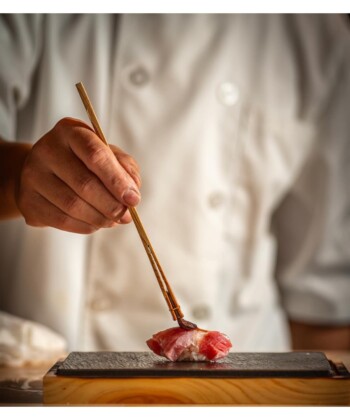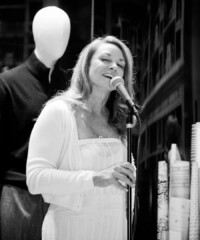Sorry, Hamlet, you’ve been dethroned. “Prince of Denmark,” trumpeted The New York Times—in a profile of chef René Redzepi—when the innovative chef first hit the international scene. Time magazine recently kicked it up a notch, simply calling him “Food God.”
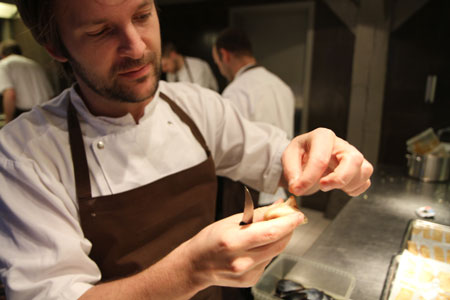
René Redzepi
The man who inspires such reverence is thirty-something, a bit scruffy-looking and an easy smiler (although, with such adoration, who wouldn’t be?). He’s in America for a nanosecond with his new cookbook, traveling on a rock-star style tour of three continents. But his home, and culinary inspiration, is Scandinavia—Copenhagen, specifically: a region where “moose and squirrel” is not a beloved children’s cartoon but a line often followed by “preheat oven to 400.”
If you haven’t heard of him, a précis: He’s the influential leader of the so-called forest-to-table movement and of “the new Nordic Cuisine.” He also serves ants as a garnish at his two-Michelin star restaurant, Noma. Redzepi’s new cookbook A Work in Progress (Phaidon) ably showcases the forager’s food and philosophy that he’s become famous for. “We cook our landscape,” he says. “[It’s] what we tell ourselves as we go to work.” Ingredients include hay, grasses, snails, roots. “The food we serve could only happen right now on that day.”
The cookbook’s recipes include such Noma dishes as Pork Rinds and Blackcurrant, Ice Cream of Unripe Juniper Berries with Rhubarb, Bone Marrow Fudge and a slow-roasted carmelized cauliflower. “No way this is going to replace the recipe for Tuesday night lasagna, but skilled home cooks” can do it, he tells DuJour—and adds that with whipped cream atop it, the cauliflower “is heaven.”
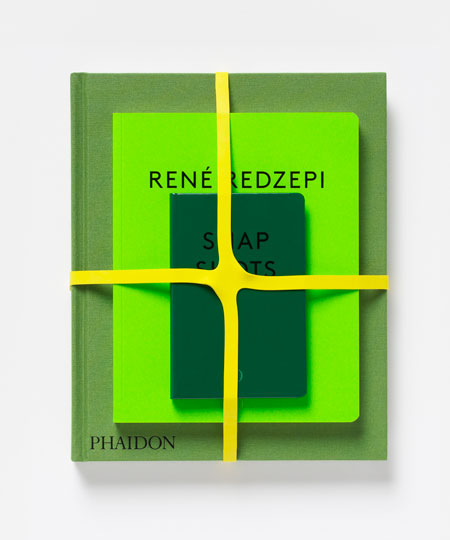
A Work in Progress
His new tome is actually a beautifully packaged set of three volumes: the recipe guide, broken down by month; a book of photographs of the chef and of his terroir; and his personal food journal of a year. If you pick up a copy, “start with the journal,” he advises. It’s cookbook as celebrity bio-slash-fetish object.
The food is delicious, although actually we have no idea. Redzepi is one of those fussy chefs—like Spainish superstar Ferran Adria, whom he studied with at El Bulli—who don’t cook outside of their own kitchens. (It’s as if the Rolling Stones showed up at Madison Square Garden and discussed songs they sung elsewhere.) But people who have been to Noma come away tremendously impressed: It won San PellEgrino & Acqua Panna’s Best Restaurant in the World award three years running, 2010-2012.
We talk to him about the fame, and he brushes it off with protestations of humbleness, diverting the talk to his staff and colleagues. The “It’s not me, it’s them” sounds well-rehearsed but genuine. Redzepi explains that his proudest moment was not his various crownings in the press but a party he threw for 200 people who’ve been part of the restaurant since his inception. All but three attended, some flying in from around the world. “I tried to invite everybody and 197 came: chefs, the farmers, the egg lady,” he says. And the good old days at Noma weren’t glamorous, he insists: When it opened ten years ago, it was “tiny, no bathrooms,” but it had “momentum and a different sort of spirit.” Along the restaurant’s decade, he says, “I found a new word I didn’t think belonged in a restaurant kitchen: fun.” He started opening later, to institute a staff dinner first. He added music in the kitchen. What’s playing? “If it’s up to me it’s jazz, but it depends who gets to the remote first.”
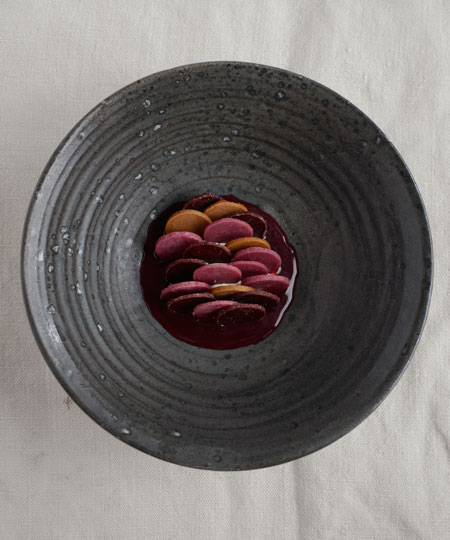
“Sloe Berries”
His first cookbook a few years ago won two James Beard Foundation awards (something of the “Oscars” of cooking and cookbooks): one was for the outstanding photography (it’s all analog, using natural light) and the other as a cookbook geared to professionals. Indeed, one thing that sets him apart, notes Susan Ungaro, president of the James Beard Foundation, is how well-regarded he is by other chefs. He’s been influential on a whole new class of chefs, she notes.
Next for Noma? He’s fresh from a redesign of the restaurant’s kitchen that broke down walls, literally, combining four rooms into one huge one; he’s also adding a fishing program and bees.
Still, being the leader of Nordic cuisine isn’t so great when cuisine still isn’t the same passion in his own country that it is here. Food is “still looked at as some sort of sustenance there,” Redzepi sighs.
How to Make Bone Marrow Fudge
“Use fresh, fresh, fresh bone marrow, tell the butcher,” Redzepi says, “and then smoke it!”
Ingredients:
100g sugar
100g glucose
200g cream
6g salt
45g butter
60g smoked bone marrow fat
7g apple balsamic vinegar
4 marrow bones, cleaned and polished
Grapeseed oil
Method:
1. Mix the sugar, glucose, cream and salt and heat to 226 degrees Fahrenheit.
2. Gradually add the butter and smoked bone marrow fat. Season with apple balsamic vinegar and pour into a plastic container 7mm in height. 3. Freeze, then cut into rounds with a 24mm ring cutter. Keep in the freezer.
To serve:
Press a fudge round into each marrow bone. Smooth the surface and wipe the top of the fudge with a little oil to shine. Wrap the bone marrow fudge in butcher’s paper and secure with twine.
From A Work in Progress: Noma Recipes by Rene Redzepi
MORE:
Is Modern Nordic Cuisine Just a Passing Trend?
Daniel Burns Elevates Beer in Brooklyn with Luksus
Ready, Set, Forage: How the World’s Best Chefs Cook Raw





